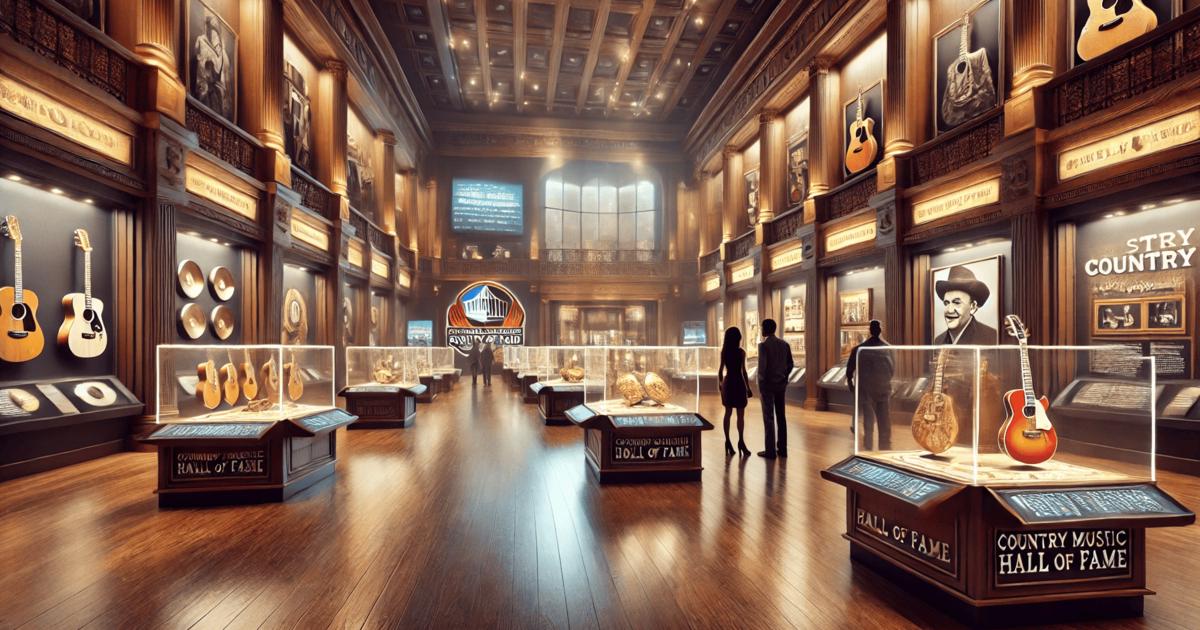Inside the Nashville Country Music Hall of Fame
A Cultural Anchor for the Country Music Industry
The Nashville Country Music Hall of Fame and Museum serves as the genre's central institution—part shrine, part archive, part classroom. For professionals in the music business, understanding its structure and function isn’t about nostalgia; it's about influence, validation, and opportunity. Whether you're an artist, label executive, historian, or brand partner, this institution plays a strategic role in the country music ecosystem.
📌 Viberate Analytics: Professional music analytics suite at an unbeatable price: $19.90/mo. Charts, talent discovery tools, plus Spotify, TikTok, and other channel-specific analytics of every artist out there.
Founded in 1961 by the Country Music Association and operated by the non-profit Country Music Foundation since 1964, the Hall of Fame and Museum honors the most influential figures in country music and preserves the genre’s legacy through exhibitions, archives, and education.
Location and Architectural Symbolism
Originally opened in 1967 on Music Row, the museum moved to a new downtown Nashville facility in 2001, next to Bridgestone Arena. A major expansion in 2014 doubled its size to over 30,000 square meters. The architectural design is intentional and symbolic: from above, the building resembles a bass clef. The Rotunda’s concentric rings represent various recording formats—78s, LPs, and CDs—while the piano-key façade reinforces the musical theme. The inscription “Will the Circle Be Unbroken” surrounds the Hall of Fame plaques, tying together tradition and continuity.
Exhibits and Archival Riches
For industry professionals, the Nashville Country Music Hall of Fame offers more than public spectacle—it houses one of the largest collections of country music artifacts in existence. The collection includes instruments, stage costumes, handwritten lyrics, photographs, and master recordings. The permanent exhibit, “Sing Me Back Home,” provides a historical overview from the genre’s roots to the present day.
Rotating exhibitions also focus on legacy acts and current stars, offering ongoing relevance. Institutions like Historic RCA Studio B (where Elvis Presley and Dolly Parton recorded) and Hatch Show Print (a legendary letterpress print shop) are part of the museum’s ecosystem. The CMA Theater hosts performances and industry events, further bridging the historical with the contemporary.
Induction Process: Professional Recognition at the Highest Level
The Hall of Fame induction is a significant marker of achievement in country music. Artists, songwriters, producers, and industry contributors are selected annually by a panel of their peers, appointed by the Country Music Association. Induction takes place at the Medallion Ceremony, a prestigious industry-only event.
The inaugural class in 1961 featured Jimmie Rodgers, Hank Williams, and Fred Rose—setting a precedent for honoring foundational contributors. For today’s professionals, being inducted is a high form of validation that signals deep-rooted influence and respect across the industry.
Educational Reach and Cultural Relevance
The museum isn't just about celebrating the past—it actively shapes the future. Hosting over 1,000 educational programs each year, it brings songwriting workshops, school partnerships, and public events into its programming. With over 1.5 million visitors annually, the Nashville Country Music Hall of Fame is often described as the definitive institution for country music preservation and education.
This matters for publishers, label teams, and artist managers. Early exposure and education help shape public perception, support catalog longevity, and build affinity for heritage acts. It’s also a venue where business, education, and performance intersect.
Why It Matters to Music Industry Professionals
From a business perspective, engagement with the Nashville Country Music Hall of Fame presents multiple opportunities:
- Brand validation: Artists featured in exhibitions gain legacy credibility that can boost catalog sales, media appeal, and sync potential.
- Licensing access: Archival materials (recordings, session logs, handwritten lyrics) are valuable for reissues, remasters, and documentaries.
- Partnership models: Labels and publishers can collaborate on curated events, educational sponsorships, and branded exhibits.
- Artist development: Newer acts tied into the institution through events or exhibitions gain a legitimacy boost and historical grounding.
- Research hub: For music historians, journalists, and producers, it’s a research facility offering deep access to manuscripts, demo tapes, and performance history.
Final Thoughts
For music professionals, the Nashville Country Music Hall of Fame and Museum is more than a cultural stop—it’s an asset. It validates careers, supports brand narratives, offers licensing and partnership opportunities, and contributes to education and fan development. As country music continues to evolve, the institution remains a stable reference point—one that honors the past while helping shape the industry's future.
Source of music data: Viberate.com

Premium music analytics, unbeatable price: $19.90/month
11M+ artists, 100M+ songs, 19M+ playlists, 6K+ festivals and 100K+ labels on one platform, built for industry professionals.




